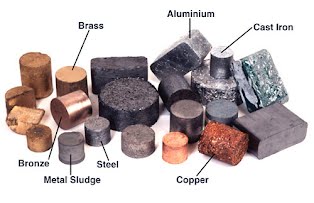Electrically charged particles, electrons, cations, or anions are called electrical conductivity, and these substances that allow the electrically charged particles to flow are called conductors. For example, the flow of electricity through a metal wire is conduction, and the metal wire is a conductor. Electrical conductivity has a vital role in the functioning of home appliances in our daily lives. From a simple wire to light up our house to running complex computer programs, every aspect of our life is unimaginable without conductivity and conductors.
This article will answer some common questions when we talk about conductors.
What Materials Conduct Electricity?
The conductors conduct electricity, and these conductors are usually metals such as copper, silver, iron, and steel. The only non-metal that conducts electricity is graphite. The ionic solids such as sodium chloride salt also conduct electricity in an aqueous or molten state. Additionally, some polar covalent compounds do conduct electricity in the water.

Famous materials that conduct electricity are:
- Silver
- Gold
- Copper
- Aluminum
- Graphite
- Steel
- Bronze
- Iron
- Concrete
- Platinum
- Mercury
- Brass
Which Type of Material is the Best Conductor of Electricity?
Silver is the best conductor of electricity, offering negligible resistance to current flow. Copper is the second good conductor widely used. Due to its expensiveness, copper is preferably used for making electrical wires and other conduction materials.
Is Conducting Electricity a Physical Property?
Yes, conducting is the physical property because the chemical nature of the substance does not change. When we talk about the physical properties, we measure the property that describes the system’s state.
Do Non-Metals Conduct Electricity?
No, non-metals do not conduct electricity because the electrons are strongly attracted to the nucleus and cannot freely move. They are usually network solids that might be viewed as giant molecules having a directional covalent bond—for example, diamond, silica, and silicon carbide.
The two most known forms of carbon, diamond, and graphite, are typical network solids non-metals. Surprisingly, graphite is the only non-metal that conducts electricity. The reason is that in the layered graphite structure, each carbon atom is surrounded by three other carbon atoms, and one free electron is available in each carbon.
The non-metal polar compounds ionizable in water conduct electricity and are called electrolytes. Aqueous electrolyte solutions can conduct electricity even though water does not. For example, the aqueous solution of hydrochloric acid conducts electricity to a great extent because it is a strong electrolyte that is completely ionized in water to offer a massive amount of charged particles to move to conduct electricity.
Ionic solids like sodium chloride (NaCl) are a solid-state’s lousy conductor of electricity. Still, they conduct electricity in molten or aqueous form due to the movement of charged particles, cations, and anions.
Are Metals Good Insulators?
No, metals are good conductors, while non-metals are excellent insulators. The insulator is the term for non-conductors, the substances that do not allow electricity to pass through themselves. Typical examples of insulators are plastic, rubber, and wood. The reason for the nonconducting behavior of the insulators that do not conduct electricity is another story we will discuss.
What Characteristics of Metals Make Them Good Electrical Conductors?
The metals are metallic solids, which have a solid metallic bond. Generally speaking, the characteristic of the metals having highly free electrons makes them good conductors of electricity. However, when we discuss the technical conducting property of metals, we talk about molecular orbital theory and the electron sea model. The Molecular Orbital Theory explains the conducting characteristics of the different metals reasonably. It is also called the Molecular Orbital Model or Band Model. According to this model, the electrons in the filled orbitals are assumed to be localized.
In contrast, the atomic orbitals containing the valence electrons overlap to form a new set of delocalized molecular orbitals. The electrons travel around the metal crystals around these orbitals. The empty molecular orbital equal in energy to the partially filled molecular orbitals explains the electrical conductivity of the metals. The partially filled molecular orbitals are conduction bands that welcome the traveling electrons from the valence band.
In the case of metals, the energy gap between the two bands is the lowest, so the electron travels quickly from the valence band to the conduction band, and the electricity is conducted. Contrary to this, the energy gap between the valence band and conduction band in the case of insulators is most significant, and there is no chance of moving electrons, so conduction of the electricity does not occur through the insulators.
Can Iron Conduct Electricity?
Yes, iron conducts electricity due to its metallic nature and the availability of free electrons. A metallic bond holds together the atoms in a metal such as iron. According to the Electron Sea Model of metallic solids, each bit in a metal crystal, for example, iron, loses all valence electrons to form a sea of valence electrons. The charged iron ions hold these electrons and give conducting property to the iron when we connect a battery terminal. We can also explain the conducting property of iron metal in the molecular orbital model or band model. According to this, there is the lowest energy gap between the valence band and conduction band, making the electrons move from the valence to conduction as the battery is connected, so the conduction occurs.
Metals are Good Conductors of Electricity Because?
Metals are a good conductor of electricity because of the availability of free electrons to move from their valence band to the conduction band, as there is the lowest energy gap between the two bands.
Elements that are Good Conductors of Heat and Electricity are?
Metals are elements that are good conductors of heat and electricity. The typical elements that are good conductors of heat and electricity are Alkali Metals, Alkaline Earth Metals, and Transition Metals. Transition metals are the most prominent and widely used metallic elements globally. Silver, the best conductor of electricity, tungsten in bulb filament, and copper wires are transition metals as elemental forms.
A Metal String that Brings Electricity to Your House
The metal string that brings electricity to your house is usually made of copper, which is pliable and heat-resistant. Although silver is a better conductor than copper, copper is preferred due to its inexpensiveness. Aluminum, Brass (an alloy of copper and zinc), iron, and tin also conduct electricity.
- Facebook Ads to Get Followers! - December 27, 2024
- ClickUp vs. Slack - December 20, 2024
- Mastering E-Commerce Analytics: A Blueprint for Success






